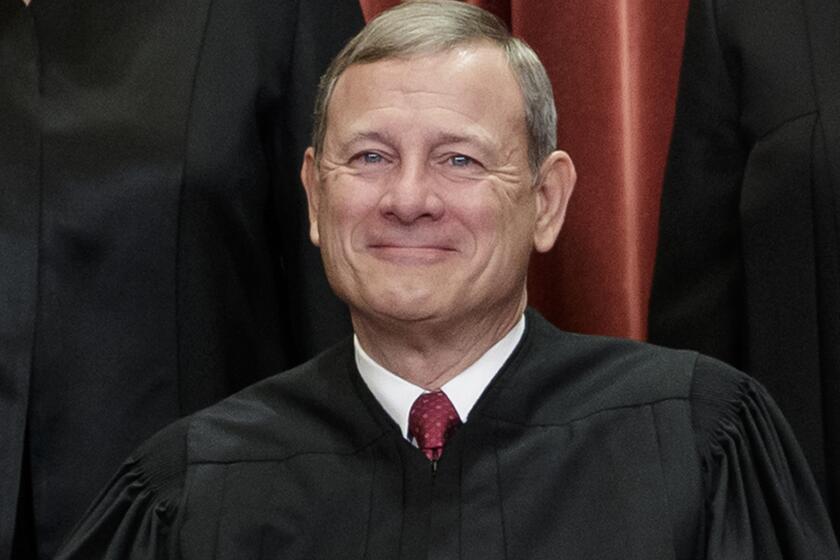Clinton Lands in Mexico, Hoping to Ease Tensions
- Share via
MEXICO CITY — President Clinton arrived here Monday for the first presidential visit to this capital in almost two decades, as many of his Cabinet members met with their Mexican counterparts to sign a host of agreements on bilateral matters ranging from money laundering to building new bridges--literally--between the two countries.
Before leaving the South Lawn of the White House, Clinton made it clear that he hoped his visit would alleviate some of the tensions between the two countries over such issues as drugs and immigration.
“We share one of the broadest and deepest relations of any two nations on Earth,” he said. “Beyond the 2,000-mile border that joins us, beyond the strong bonds of trade that benefit both our peoples, we must cooperate as never before to find common solutions to common problems.”
In advance of Clinton’s arrival, Mexican Foreign Secretary Jose Angel Gurria Trevino and U.S. Secretary of State Madeleine Albright chaired the meeting of the Binational Commission--an annual conference of those members of the two Cabinets who deal with U.S.-Mexican issues.
Later, State Department spokesman Nicholas Burns reported that Albright had promised the Mexican government $6 million to help it organize a new government agency to fight the drug war. “The Mexicans desperately need this,” said Burns.
The Binational Commission sessions served as a warmup to the presidential visit and were designed to create a mood of good feeling despite some of the issues that divide the two countries. The two Cabinets did not even make a show of conferring before signing the latest batch of agreements. They were signed after the ceremonial opening of the conference and just before the delegations split into smaller groups.
The agreements, which covered a raft of issues of relatively minor importance, included pacts on an increased exchange of information on drug-money laundering, free transportation for Fulbright fellows, protection for migratory birds, noninterference with radio frequencies used by firefighters along both sides of the border, the start of construction of the new Los Tomates bridge over the Rio Grande between Brownsville, Texas, and Matamoros in Mexico, and the reopening of a reconstructed old bridge between Brownsville and Matamoros.
The atmosphere of the public opening session of the commission was warm and optimistic. Albright even wore a golden Mexican shawl that Gurria had given her.
But Gurria did not hide two of Mexico’s main grievances--the annual U.S. certification process that forces Mexico to go through the humiliating exercise of proving it is a cooperative partner in the war on drugs, and the new U.S. immigration law that Mexicans fear will hurt many of their compatriots living in the United States.
“It would be a tragedy for both our countries,” Gurria said, “that drug traffickers would benefit while our governments are involved in a sterile and irritating exercise of allocating blame.”
On the issue of immigration, however, he expressed the hope that a Mexico-U.S. study of migration, due to be completed next month, will clear the air and contribute to “better-informed discussions” on the matter.
Another contentious issue--a standing request by the U.S. Drug Enforcement Administration for its agents stationed in Mexico to carry arms for self-protection--came up at a joint Albright-Gurria news conference. President Ernesto Zedillo flatly denied that request in an interview with several U.S. correspondents here last Friday. “The answer is no,” he said. “No further discussion.”
Asked about the controversy Monday, Albright said she hopes to resolve it during this week’s meetings and added: “They face dangers. We must ensure their safety.” But Gurria told reporters that he would not contradict his president.
The Mexican foreign minister then quickly changed the subject to an issue many Mexican law enforcement agents see as the flip side of the drug trade: the illegal smuggling of U.S. arms into Mexico, often along the same routes used by Mexico’s powerful drug cartels.
“The trafficking in arms is a concern to both countries,” Gurria told a Mexican journalist who had asked whether his government would continue to pressure U.S. officials to crack down on the arms trade. And in her speech opening Monday’s commission session, Albright indicated that Mexico has succeeded in keeping the arms trafficking issue on the agenda this year.
She referred to “the hydra-headed evil of drugs, corruption, money laundering, illegal arms trafficking and organized crime,” and U.S. officials said they were discussing ways to expand cooperation between the U.S. Treasury Department’s Alcohol, Tobacco and Firearms agents and Mexican law enforcement on the arms trade.
Upon his arrival in Mexico City, Clinton conferred with Gurria and then toured the renowned National Museum of Anthropology, which houses some of the most magnificent sculptures of the Mayan, Aztec and other pre-Columbian civilizations.
The president was not welcomed by everyone here. Several hundred students, militant leftists and pro-Castro demonstrators carrying homemade banners proclaiming “Clinton, Get Out,” protested near the American Embassy.
Some burned American flags. Riot police with helmets, shields and truncheons kept them from gathering too close to the embassy.
The tense confrontation broke the calm of a quiet Cinco de Mayo holiday commemorating the Mexican defeat of the French attempt to install Maximilian--a member of the Austrian royal family--as emperor of Mexico in the 19th century.
Mexican officials, hoping to remove a temptation from the demonstrators, did not festoon the streets with the national flag of the visiting president, the usual practice whenever a foreign chief of state arrives in Mexico City on an official visit. Instead of attaching the American flag to light poles, the Mexicans attached banners, featuring thin strips of red, white and blue, that bore no resemblance to the American flag. The demonstrators, however, brought their own American flags to burn.
Times staff writer Elizabeth Shogren contributed to this report.
More to Read
Sign up for Essential California
The most important California stories and recommendations in your inbox every morning.
You may occasionally receive promotional content from the Los Angeles Times.










